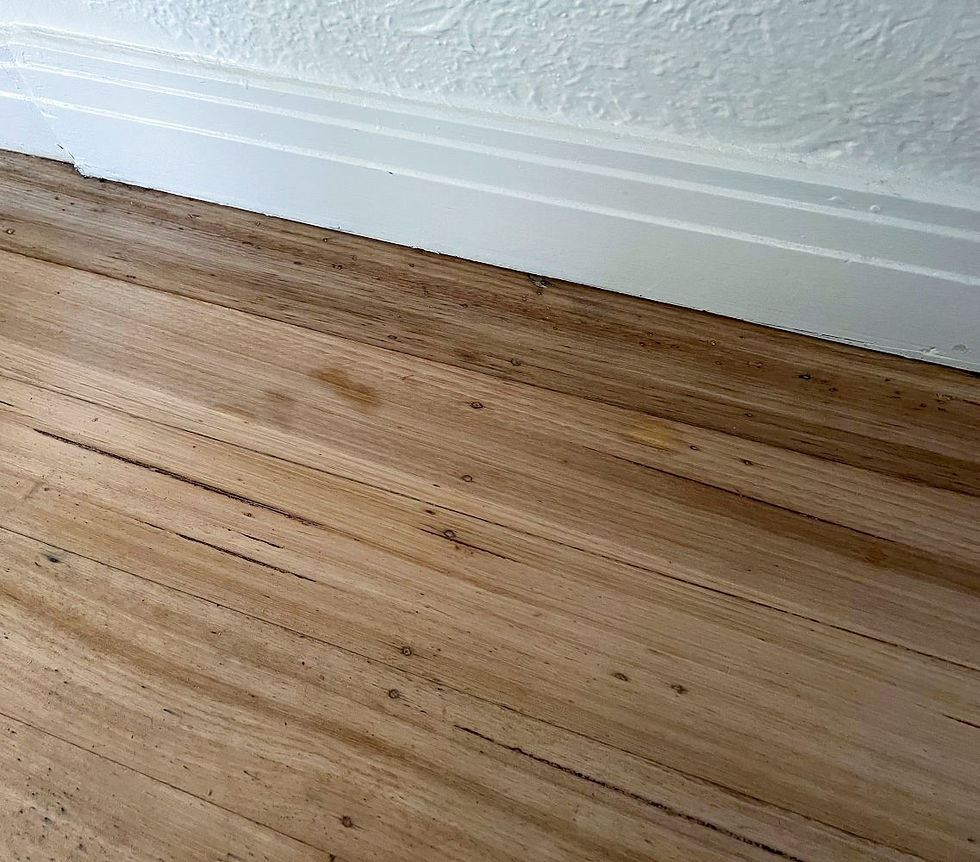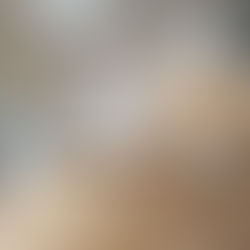
Jul 9, 2025
When does a DIY fix become something bigger?
Stains on timber floors are an all-too-common sight in Australian homes, from a dropped glass of red wine to an unfortunate pet accident (oops.)
While timber floors are celebrated for their durability, their porous nature means that if a stain isn't addressed quickly, it can penetrate the protective finish and permanently mark the wood itself.
The key to successful stain removal is understanding the type of stain and the depth of the damage. While some minor surface marks can be tackled with a DIY approach, deep-set or severe stains almost always require professional sanding and refinishing.
At MyFlooring, we've seen it all, and our expertise lies in knowing when a simple clean won't suffice.
Identify the Stain Type and Severity
Before attempting any removal, it's vital to identify what kind of stain you're dealing with. Different stains require different approaches:
Water Stains: These can appear as white or grey rings, indicating the moisture has only affected the surface finish. However, if the water has been sitting for a long time, it can react with the tannins in the wood (especially in Australian hardwoods like Jarrah or Blackbutt), creating a deep, black stain that has penetrated the timber itself.
Pet Stains: Often dark and discoloured, these are caused by the ammonia in urine. The chemicals burn and permanently discolour the timber fibres. These stains are particularly difficult to remove.
Oil & Grease: These stains are insidious because they soak into the wood grain. Simply cleaning the surface won't work, as the stain will reappear or "bleed" through a new finish.
Ink & Dye: Spills from ink pens, hair dye, or art supplies can leave stubborn, highly pigmented marks that bond with the timber.
DIY Solutions for Minor, Surface-Level Stains
If the stain is recent and only affecting the surface finish, you might have a chance with a home remedy. Always test an inconspicuous area first.
For White Water Marks: Gently rub the spot with a soft cloth and a small amount of toothpaste or a paste of baking soda and water. The mild abrasive quality can help remove the surface damage.
For Minor Grime and Scuff Marks: A pH-neutral, timber-specific floor cleaner is the best and safest option for day-to-day cleaning and surface stain removal.
For Fresh Spills: The most effective "DIY" method is to act immediately. Blot, don't wipe, and use a clean cloth to absorb as much of the liquid as possible.
Important Note: Do not use abrasive household cleaners, steel wool, or harsh chemicals. They can permanently damage your floor's finish and timber, or can strip the top protective layer, creating a worse problem than the original stain.
When to Call a Professional?: The Only Solution for Deep Stains
For a stain that has penetrated the floor's protective finish and discoloured the timber itself, a DIY solution is not only ineffective but can cause further damage. The only reliable way to remove these stains is with professional floor sanding and refinishing.
This is where MyFlooring's expertise is invaluable. Our process for dealing with severe stains is thorough and effective:
Professional Assessment: Our first step is to assess the type and depth of the stain. We can identify if the stain is superficial or if it has soaked deep into the timber fibres, helping us recommend the best course of action.
Sanding: The Primary Method: For most deep-set stains (like black water rings or old pet stains), the only way to remove them is to sand away the affected layer of timber. Our professional-grade sanding machines are designed to remove a precise amount of wood, getting right to the source of the stain while preserving the integrity of your floor.
Specialised Treatments: In some cases, sanding alone may not be enough. For particularly stubborn stains, we can use specialised wood bleaching products to lighten the discoloured area, or in the worst-case scenarios, we can carefully replace the stained boards with new timber.
Re-finishing and Protection: Once the stain is gone, we re-sand the entire floor and apply a new protective finish. This not only restores the floor's uniform beauty but also provides a durable barrier against future spills and stains. We can match the finish to the rest of your home, ensuring the repair is completely invisible.
Attempting to sand a single stained area yourself can create a noticeable "dished" spot and a mismatched finish. A full, professional sand ensures an even surface and a seamless, high-quality result.
For minor spots, be proactive. For anything more serious, don't risk damaging your floors further.
Contact MyFlooring today for a professional assessment of your timber floors. We'll provide an honest quote and a clear plan to remove those stubborn stains and restore your floor's original beauty.
If you're curious
See our Previous Work
We've completed a range of staining projects across Melbourne.
Click on any post below to see the results and be guided to our full gallery.










